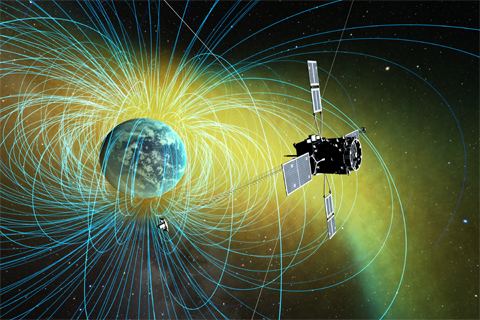COSPAR ID 2016-080A Bus SPRINT Power ≧700 W Launch date 20 December 2016 Launch site Uchinoura Space Center Operator JAXA | SATCAT no. 41896 Launch mass ~350 kg Reference system Geocentric Rocket Epsilon Mission type Astronomy | |
 | ||
Similar Geotail, Hisaki, Kounotori 6, Akebono, Hitomi | ||
Arase, formerly known as Exploration of energization and Radiation in Geospace (ERG), is a scientific satellite to study the Van Allen belts. It was developed by the Institute of Space and Astronautical Science of JAXA.
Contents
It was launched aboard Epsilon launch vehicle at 11:00:00, 20 December 2016 UTC into apogee height 32250 km, perigee 214 km orbit. Subsequent perigee-up operation moved its orbit to apogee 32110 km, perigee 460 km of 565 minutes period.
Spacecraft
The Arase spacecraft is the second satellite based on SPRINT bus, after Hisaki (SPRINT-A). Arase weighs about 350 kg, measures about 1.5 m × 1.5 m × 2.7 m at launch. Once in orbit, it will extend four solar panels, two 5 m masts, and four 15 m wire antennae. The spacecraft is spin-stabilized at 7.5 rpm (8 seconds).
Planned mission duration is one year of scientific observation, with extension if possible.
Instruments
Arase carries following instruments:
MGF is located at the end of 5 m extended mast.
PWE consists of a search coil (PWE-MSC) located at the end of another 5 m extended mast, four 15 m wire antennae (PWE-WPT), and associated electronics unit (PWE-E).
S-WPIA will analyze the data obtained by other instruments.
